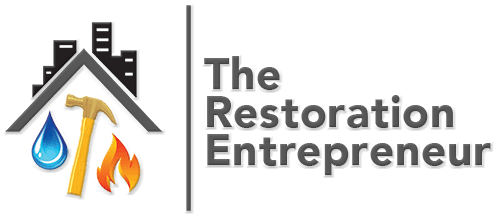
Good cash flow management ensures there is always enough cash on hand to meet expenses.
For most restoration owners, this is rarely the case. We always seem to be cash strapped. We are either preparing for payroll or just completing it. There is rarely a surplus of money on hand, making this one of the highest pressure experiences in our business life.
Let’s look at the three key factors that have the greatest impact on cash flow. Get a handle on these, and cash flow won’t keep you up at night any longer.
- STOP floating construction costs. Get paid before the job begins!
Adjusters are just fine with you floating construction costs, and so is your customer. DON’T DO IT! The two draw system put in place by the insurance companies provides one draw at the start of the job and the other at the end. The ACV payment is sent to the customer following Estimate Approval. GET THAT MONEY, which is earmarked for you BEFORE you start the job.
As you can imagine – NOT floating construction costs are a huge plus for your cash flow. Use OPM to pay for your construction costs. In our industry, OPM is the insurance proceeds, not your own.
- MAKE higher profits on the work you do. Higher profits produce more revenue for overhead costs.
You achieve this by taking control of your material and labor costs.
Control material costs – Take ALL credit cards away from EVERYONE and CLOSE ALL Charge Accounts. Force every material purchaser to call the office for transaction processing. Only the Office and the Owner should have a means for payment. This will STOP all unauthorized purchasing and leads to more accurate job costing.
Control Labor Costs – Never pay more than 65% of what you are paid for labor and never pay twice to complete a job.
Don’t take bids from subs and never pay subs by the hour. Use Xactimate to determine what you are paid for a set of tasks and never pay a sub more than 65% of that total.
Keep in mind that many markets pay more than $100 per hour to hang drywall and $90 an hour for carpentry. Locking in a 35% profit margin for you still gives a GREAT labor share with your sub. Hold the line!!
Project managers are responsible for ensuring work is done entirely and satisfactorily before releasing a sub and paying them for their labor. If this doesn’t occur and you have a full day’s punch list of work, what do you do? The sub is no longer available, so the only choice is to hire a second sub to fix the work of the first sub. NEVER EVER DO THAT since it erodes your profit. Get it right the first time!
- GET paid more quickly when the job is completed. GET your customer involved in the payment process.
GET a Certificate of Completion – The signed COC informs the adjuster that the Customer verifies that the scope of repair is complete and the quality of work is satisfactory. Without this, the adjuster may take weeks to call the customer for these assurances. Payment will never be released until the adjuster has confirmed both completion and satisfaction.
NEVER EVER allow your Lien limits to run out without filing a Lien. Once you have gone beyond the calendar limitations to file a Lien, you have forfeited your most effective leverage for payment. Notifying your customer that you intend to Lien if payment is not received in 15 days will do more to engage the Customer in getting you paid than anything else you can do. Don’t forfeit it!
The possibility of a Lien keeps the customer motivated to get you paid in a timely manner!
Do these three things, and cash flow will improve dramatically:
- GET paid before the job starts.
- MAKE the highest profit possible on every job.
- GET paid quickly at the end of the job.
These three are EXTREMELY IMPORTANT. Do them and no more sleepless nights!!
